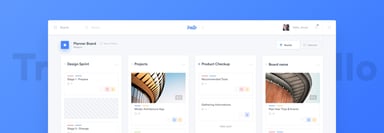Will Zero UI Overtake Screen-based Interfaces?

Now zero UI is making it possible for computers to adapt to users and speak our language.
As coined by Andy Goodman in 2015, zero UI is “the new paradigm of design when our interfaces are no longer constrained by screens, and instead turn to haptic, automated, and ambient interfaces.” While it might sound futuristic, it’s not a new idea. In fact, you probably already use it in your day-to-day life. From asking Apple’s Siri about the weather to commanding your Amazon Echo to play your favorite song, interface-less technology is all around us — and it’s catching on. Today, 35% of adults in the US own a smart speaker.
What’s more, the COVID-19 pandemic has made us cautious of touch like never before.
62% of consumers expect to increase their use of hands-free technologies once the pandemic subsides.
So, it’s clear touchless technology has gained ground. But will it really mark the end of our screen-based world? And what does it mean for the future of design?
Before we jump to predictions, let’s take a look back at the evolution of interfaces to see how different innovations have shaped these new forms of interaction.
Changing the rules of human-machine interaction
From programming computers with punch cards to automating tasks with a command line, communicating with machines has always meant speaking their language.
It wasn’t until the graphical user interface (GUI) came about in the 1970s that things started getting easier. Companies began investing in ways for ordinary people to communicate with computers. Then, in 1983 came Apple’s Lisa — a significant moment in the evolution of UI. Equipped with on-screen graphics, a keyboard, and a mouse, it was the first commercial computer usable by people with no special training.
A decade later, laptops overtook desktops and the mouse and keyboard continued to improve. We saw the launch of the hand-held PalmPilot, and voice made its debut with Dragon Naturally Speaking, the first speech recognition product for consumers.
Touch interfaces took off dramatically thanks to the launch of the iPhone in 2007 and the iPad in 2010. Then came the Siri voice assistant in 2011, setting the standard for what was to come. Since then, touch and voice UI have become a ubiquitous part of our everyday lives.
Another big milestone was the rise of more immersive interfaces based on AR and VR technologies which became mainstream with the Pokémon Go craze that took the world by storm in 2016.
Bringing the human back to computing
If you look back at the evolution of interfaces, it’s clear that UI design is heading towards more human forms of interactivity. By removing the physical interfaces and unnatural behaviors we’ve become accustomed to, communicating with our devices is slowly becoming a more natural experience. In other words, we’re finally teaching machines how to speak our language.
That’s what zero UI is all about: moving away from the screen and taking advantage of data and context to create a more seamless user journey.
It’s the concept of interacting with our devices through using natural gestures: voice, movement, or facial patterns.
Not only can zero interface technology reduce our reliance on screens — something that’s proven to improve our health and connection with others — but it can also make technology more useful, safe, and inclusive than ever before.
Designing experiences beyond the screen
One impressive application of zero UI that’s making driving safer is BMW’s Gesture Control System. No more taking your eyes off the road to fumble with buttons or a touchscreen. Instead, thanks to sensors built into the roof, you can use simple hand gestures to accept phone calls, turn up the volume, or even set navigation destinations.
Looking to lower your energy bill? There’s a zero UI application for that, too. Nest Thermostat learns what temperature you prefer and builds a schedule around it. Not only can it save energy by detecting when you’re not home, but it can also alert you when there’s cleaner or cheaper energy available.
“Alexa, turn on the lights.” “Alexa, ask Uber for a ride.” Smart speakers make the mundane more convenient, but they also open up many new and exciting ways to make tech more inclusive. With an aging population, and over one billion people worldwide experiencing some sort of disability, it’s not hard to imagine how these voice-activated features could be life-changing for the elderly or disabled.
While it’s still early days for interface-less technology, the above innovations give us a glimpse of what the future holds.
Zero UI could mean a world where everything and anything becomes an interface.
Multitudes of devices could work together to interpret and anticipate your needs. From your alarm clock triggering your coffee grinder, to your reminder to leave the house then figuring out which train you should catch. At its extreme, zero UI means weaving interfaces into the fabric of everyday life until they are indistinguishable from it.
Challenges to realizing zero UI
While there is no doubt interfaces have taken a giant leap forward in the past decade, there’s still a long way to go before they can reach their full potential.
One of the main barriers to advancing zero UI is changing consumer behavior. Devices like Amazon Echo and Google Home are household names, but their advanced functionalities are still somewhat difficult to set up and a barrier for those less willing to adapt to a new technology.
Also, advanced commands like making a voice purchase on Amazon require a great deal of trust. Without seeing what you’re purchasing, or knowing what options your device has considered, how can you know for sure your device will do what you asked it to?
These modern ways of interacting with technology are also opening up new ways for cybercriminals to steal personal data. From voice-spoofing to eavesdropping on private conversations, is it really worth trading our privacy for convenience?
Acceptability is another factor impacting the maturity and adoption of zero UI, or in other words, have we reached an acceptability plateau? “Why would I switch if what I am using works just fine?” “Why would I talk to my phone on a crowded train when I could just text?” Until we define the proper narrative around each of these use cases, it will be difficult to shift them from novelty to value-based.
Zero UI – the end of a screen-based world?
It’s safe to say zero UI will play a large part in the future of design, but it’s not something that’s going to happen overnight — and there are no concerns that screens will be wiped out completely.
It will more likely be a combination of technologies, or at the very least, a choice between them. For example, in-store experiences using voice, gestures, and screens, all together as one.
There are definitely use cases where zero UI will be more prevalent. For making technology safer or more inclusive, for example. However, in other use cases, it may take longer to change our relationships with devices than we may have first thought.
While a world without screens may never be a reality, a future without complicated interfaces is already happening. It’s only just the beginning but its potential for growth remains virtually limitless.






.jpg?width=384&height=202&name=10%20Tips%20for%20Stunning%20%20Dark%20Mode%20Design%20(1).jpg)

















